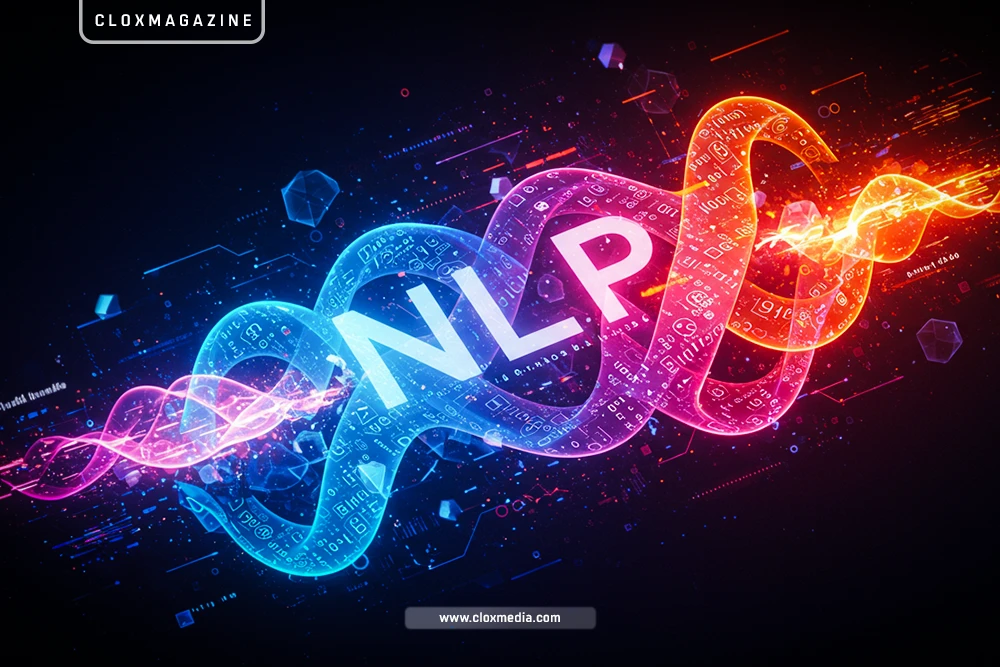Every day technology interacts with us through search engines, voice assistants, and a plethora of other applications. This is possible because of the advancements in Natural Language Processing (NLP).
NLP simplifies the relationship between us and computers, but there’s a lot more going on beneath the surface. Researchers have been working tirelessly to overcome many hurdles and today I want to discuss the power behind modern NLP and its practical applicability, as well as talk about the changing possibilities of language AI.
NOTE: This is an official Research Paper by “CLOXLABS“
The Hidden Computational Challenge of Language AI
When you speak to your phone and it provides an answer almost instantaneously, you appreciate the results of years of optimization work that is taken for granted by most users. There is a complex infrastructure comprising advanced algorithms and sophisticated engineering hidden behind every seamless interaction os language AI that requires intensive computation which, without clever engineering, would necessitate massive computing resources and consumption of energy.
All traditional NLP models, and in particular the transformer based architectures, have had tremendous success not just in text but also in other domains such as vision related tasks. These models utilize self attention mechanisms that are capable of capturing both close and far-off correlations between words or tokens. But still, there is a major problem that is being tackled by most researchers, which is the cost of performing computations increases with the length of input quadratically. This becomes a problem especially when the text is longer.
This quadratic scaling creates a genuine bottleneck for many real-world applications. Imagine trying to analyze an entire document, process a lengthy legal contract, or generate a comprehensive response to a complex query. Without efficiency improvements, these tasks would require expensive hardware and consume substantial energy-luxuries that aren’t always available, especially on mobile devices or in resource-constrained environments.
The Moment Everything Changed
The turning point came when researchers recognized that many of the parameters in large neural networks aren’t actually contributing significantly to their performance. This realization sparked a wave of innovation focused on streamlining these models without sacrificing their capabilities.
As Frankle and Carbin demonstrated in their groundbreaking work on “The Lottery Ticket Hypothesis” , neural networks tend to have only a specific subset of parameters that are truly essential for accurate predictions. The rest? They’re essentially computational overhead that can be trimmed away-like scaffolding that’s no longer needed once a building is complete.
… All ADS on this platform are served by GOOGLE …
Pruning: The Art of Neural Simplification
One of the most intuitive approaches to making NLP more efficient is model pruning-a technique that’s surprisingly similar to how our own brains optimize neural pathways.
Model pruning refers to the process of removing unimportant parameters from a deep learning neural network to reduce model size and enable more efficient inference. It’s a surgical approach to model compression, focusing on removing weights that aren’t pulling their weight (no pun intended) while preserving those that contribute meaningfully to the model’s performance.
There are two main approaches to pruning neural networks:
- Train-time pruning occurs during the model’s training phase
- Post-training pruning happens after a model has been fully trained.
Both approaches aim to reduce the computational footprint while maintaining accuracy. Think of it as the difference between building a streamlined structure from the start versus carefully removing unnecessary elements from an existing one.
What makes pruning particularly effective is its precision. Unlike some optimization techniques that apply blanket transformations across an entire model, pruning targets specific parameters based on their importance. The result? Models that maintain their intelligence while shedding computational weight.
Real-World Impact of Pruning
Let me put this in perspective: when done properly, pruning can significantly reduce a model’s size without meaningful performance degradation. This isn’t just an academic exercise-it translates directly to faster response times, lower memory requirements, and models that can run efficiently on devices with limited resources.
This means being able to implement more sophisticated language tools without needing to invest in expensive hardware upgrades. For users, it means more responsive applications and less battery drain when using NLP-powered features.
Quantization: Trading Precision for Performance
Another breakthrough approach that’s revolutionizing NLP efficiency is quantization-a technique that might initially sound counterintuitive but delivers remarkable results.
Quantization reduces the computational and memory demands of a machine learning model by decreasing the precision of the numbers used to represent the model’s parameters. Traditional models typically use 32-bit floating-point numbers, but through quantization, these can be converted to 8-bit integers or even 4-bit integers in some cases.
This precision reduction creates substantial benefits:
- Dramatically smaller models: Quantization can reduce model size by up to 75%-I’ve seen models shrink from over 2GB to less than 1GB through this process alone.
- Significantly faster inference: In experiments, quantized models have demonstrated inference times reduced by one-third when running on CPUs compared to their full-precision counterparts.
- Broader deployment options: The reduced resource requirements open doors for deployment in environments where computational resources are limited.
Think about what this means in practical terms: language models that previously required specialized hardware can now run efficiently on standard devices. Services that once needed cloud connectivity for processing can now operate locally on your phone or laptop. The implications for privacy, speed, and accessibility are profound.
When Less Precision Actually Works Better
Here’s the fascinating part that surprised even many researchers: in many NLP tasks, the reduced numerical precision doesn’t significantly impact performance. In fact, in some cases, it can actually improve generalization by preventing the model from overfitting to training data.
The technique works because language understanding doesn’t typically require the extreme numerical precision used in scientific computing. Just as you don’t need to measure ingredients to a thousandth of a gram when cooking a delicious meal, language models don’t usually need 32-bit precision to understand and generate text effectively.
The Transformer Revolution: Rethinking Attention Mechanisms
Beyond pruning and quantization, some of the most exciting efficiency gains have come from reimagining the fundamental architecture of language models-particularly the attention mechanisms that power them.
The standard self-attention mechanism in transformers examines all possible pairs of tokens in a sequence, which creates the quadratic scaling problem I mentioned earlier. But researchers have developed clever alternatives that maintain most of the benefits while dramatically reducing the computational cost.
One remarkable example is the Transformer-LS approach, which strategically combines local and global attention patterns. This method achieves state-of-the-art results while using only 50% to 70% of the computation required by other efficient transformer models.
On benchmark tasks, this approach has demonstrated significant advantages-particularly for tasks that require understanding both detailed local context and broader document-level relationships. The implications are particularly important for processing longer documents or high-resolution images, where traditional attention mechanisms become prohibitively expensive.
… All ADS on this platform are served by GOOGLE …
Beyond Theory: Practical Applications
These aren’t just theoretical improvements. They’re enabling entirely new applications of NLP technology:
- Document-level understanding: Efficient transformers can now process entire documents at once, enabling more coherent analysis and generation.
- High-resolution image processing: The same techniques that make language processing more efficient are being applied to vision transformers, allowing them to work with larger, more detailed images.
- On-device intelligence: Models that previously required cloud computing can now run directly on smartphones and other edge devices, improving privacy and reducing latency.
Implementing Efficiency in Your Own Projects
For the technically-minded readers who might want to experiment with these techniques, here’s a glimpse into how you might apply quantization to an existing model:
Using PyTorch‘s quantization tools, you can convert a model’s weights from 32-bit floating point to 8-bit integers with just a few lines of code:
model_quantized = quantize_dynamic(model, {torch.nn.Linear}, dtype=torch.qint8)
# Run inference with the quantized model
model_input = tokenizer(text, truncation=True, return_tensors='pt').to(device)
model_output = model_quantized.generate(**model_input, max_new_tokens=64)
summary = tokenizer.decode(model_output, skip_special_tokens=True)This simple transformation can yield dramatic performance improvements, especially when running on CPUs. For many applications, the slight trade-off in precision is well worth the gains in speed and efficiency.
The Future of Efficient NLP
As we look forward, the efficiency frontier in NLP continues to advance at a remarkable pace. Researchers are exploring novel approaches like:
- Sparse attention patterns that adaptively focus computational resources where they’re most needed
- Neural architecture search to automatically discover more efficient model structures
- Hardware-aware optimization that tailors models to the specific characteristics of deployment platforms
These innovations will continue to democratize access to sophisticated NLP capabilities, enabling more developers, companies, and content creators to harness the power of language AI without requiring massive computational resources.
… All ADS on this platform are served by GOOGLE …
Conclusion: Efficiency as the Key to Accessibility
The quest for efficiency in NLP isn’t just about technical optimization-it’s about making powerful language technology accessible to more people and applications. Each breakthrough that reduces computational requirements opens new doors for innovation and practical deployment.
As these techniques mature and become standard practice, we’ll see increasingly sophisticated NLP capabilities appearing in places we might not expect: from resource-constrained IoT devices to applications in regions with limited access to advanced computing infrastructure.
For content creators and publishers like CLOXMAGAZINE, staying informed about these developments isn’t just academically interesting-it’s practically valuable. Understanding how these models work, their limitations, and their potential allows us to better leverage them in our work while maintaining a realistic perspective on their capabilities.
The efficiency revolution in NLP represents one of the most important but least visible developments in AI. While much attention focuses on headline-grabbing capabilities, these behind-the-scenes optimizations are what will ultimately determine how widely and equitably the benefits of language AI can be distributed.
CLOXMAGAZINE, founded by CLOXMEDIA in the UK in 2022, is dedicated to empowering tech developers through comprehensive coverage of technology and AI. It delivers authoritative news, industry analysis, and practical insights on emerging tools, trends, and breakthroughs, keeping its readers at the forefront of innovation.









